One way to bring a rainbow of warm colors to your garden is to plant some Gerbera daisies.

This post will introduce you to these tender perennials, providing you with the in-depth details you need on how to plant and care for them.
If you are looking for something specific, you can jump right to the section you are interested in using our convenient table of contents.
Jump to:
- What Are Gerbera Daisies?
- Are Gerbera Daisies Annual or Perennial?
- Gerbera Daisy Basics
- Where Do Gerbera Daisies Grow?
- Why Grow Gerbera Daisies?
- Gerbera Daisy Landscaping Ideas
- Recommended Gerbera Daisy Varieties
- When Do Gerbera Daisies Bloom?
- How Long Do Gerbera Daisies Bloom?
- When to Plant Gerbera Daisies
- Ideal Growing Conditions for Gerbera Daisies
- How to Plant Gerbera Daisies
- How to Care for Gerbera Daisies
- How to Divide and Transplant Gerbera Daisies
- Recommended Companion Plants for Gerbera Daisies
- Frequently Asked Questions About Growing Gerbera Daisies
- Where to Buy Gerbera Daisies
What Are Gerbera Daisies?
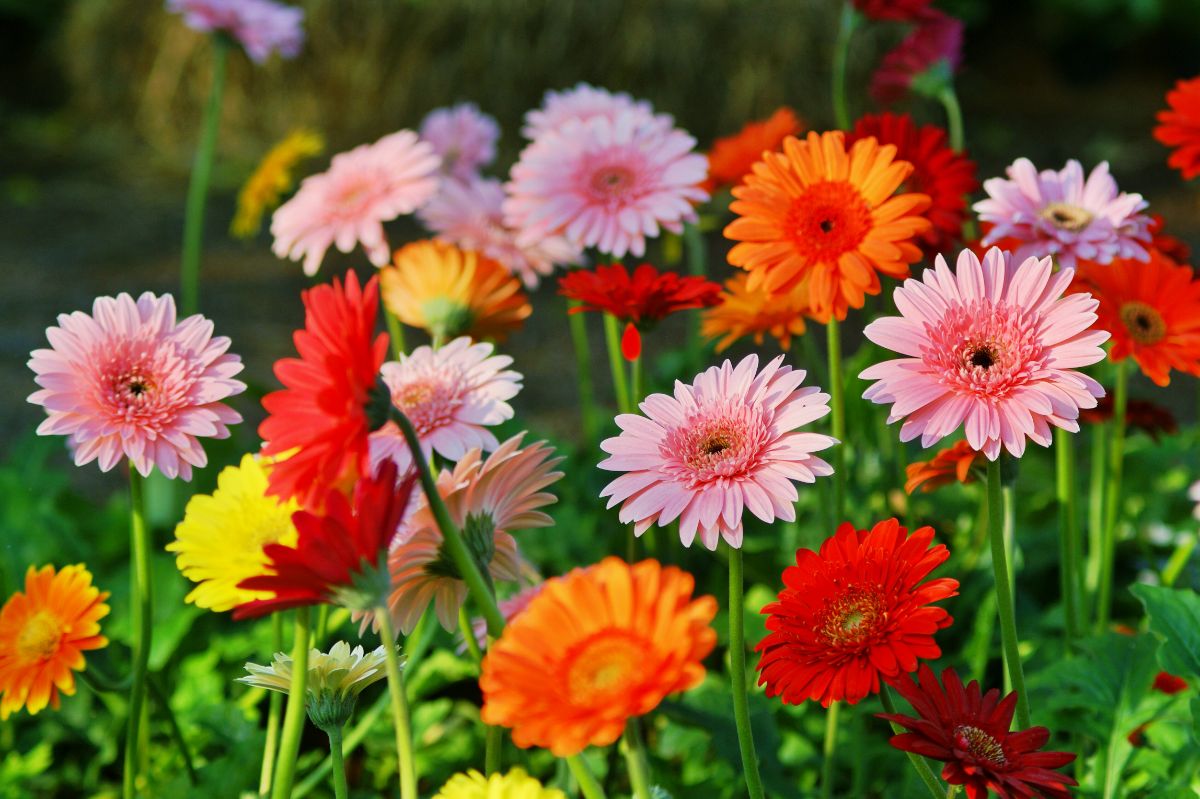
Gerbera daisies are flowering plants in the genus called Gerbera, named after Traugott Gerber, a famous German botanist who lived during the 18th century.
Sometimes people capitalize “Gerbera” in the name of these daisies. Other times, they do not. We have chosen to capitalize it since it is derived from a proper name.
It is worth spending a little extra time on this section, because you are probably wondering how Gerbera daisies are related to other types of daisies.
The Gerbera genus belongs to the family called Asteraceae. Sometimes, this family is called the “daisy family,” “sunflower family,” or “aster family.”
Indeed, the Aster genus is part of this family as well.
So is the Bellis genus, which contains Bellis perennis, better known as the “common daisy” or “English daisy.”
There are also other types of daisies as well.
If you want to learn about how to grow common daisies, see our Daisies Full Growing Guide.
You may also be interested in our Asters Full Growing Guide.
In this guide, we will only be focusing on Gerbera daisies.
Are Gerbera Daisies Annual or Perennial?
You may be wondering whether Gerbera daisies you plant this year will come back next year.
Gerbera daisies are classified as tender perennials. That means that in warmer climates, yes, they come back every year.
What about in cooler climates? Gerbera daisies may die off in the winter. But if you keep them in containers, you can bring them indoors to overwinter them, which we will discuss later in this post. They will then be able to bloom again for you the next year.
Gerbera Daisy Basics
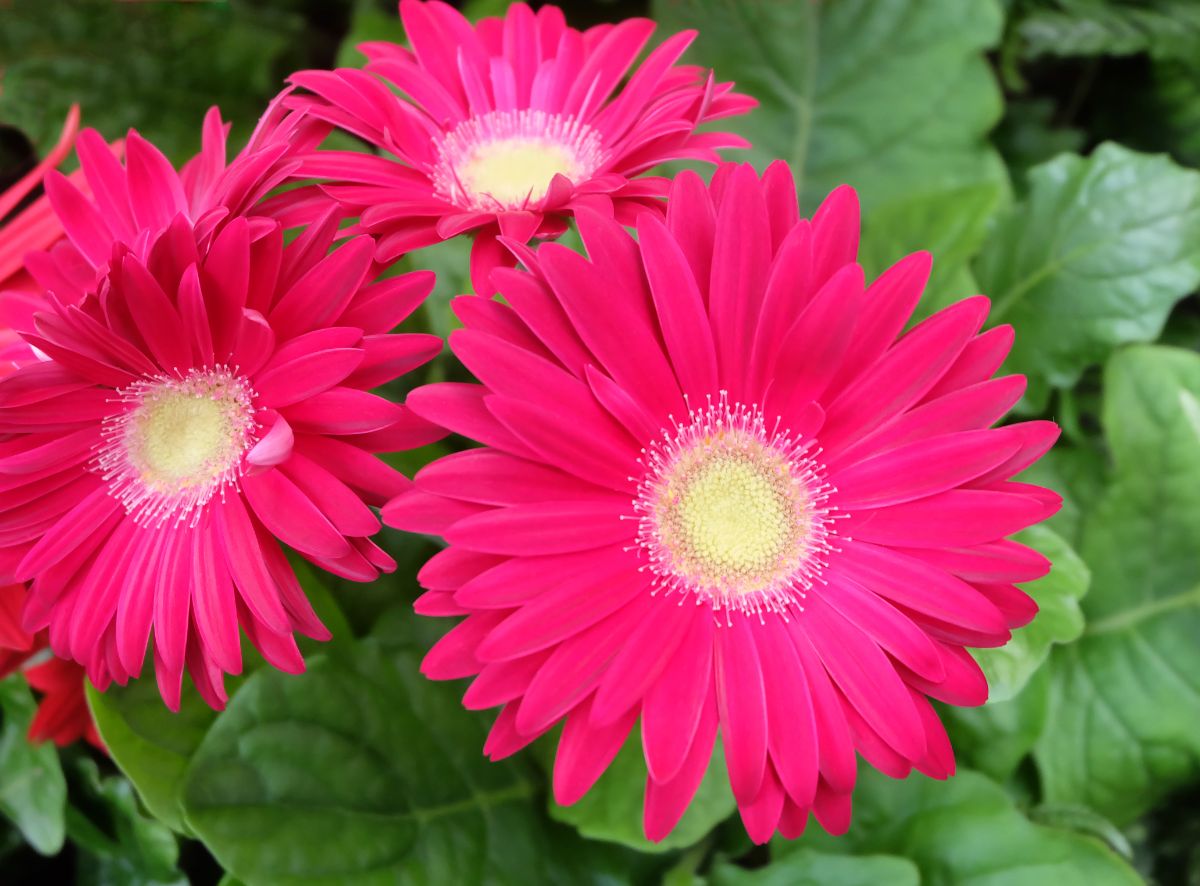
Zones: Perennial in zones 7-11, annual in other climate zones
Blooming season: Spring
Expected height: Up to 18 inches
Soil: Rich or average
Sun: Full sun to partial shade
Where Do Gerbera Daisies Grow?
If you want to grow Gerbera daisies as perennials without worrying about bringing them indoors for the winter, plant them in climate zones 7-11. But you can get away with them in lower zones if you are willing to do some extra care during winter.
Not surprisingly, Gerbera daisies are native to tropical areas. They originally grew in Asia, South America and Africa before making their way around the world. Indeed, that is why we sometimes call them “African daisies.”
Why Grow Gerbera Daisies?
Here are just a few reasons to get excited about growing gerbera daisies in your garden:
- Gerbera daisies have a wonderfully long bloom period.
- You can get Gebera daisies in so many different colors. There are varieties that are white, red, yellow, pink, lavender, orange, and other hues. Some of them even have more than one color on the same blossom.
- Because of the long bloom period, Gerbera daisy plants are an amazing source of cut flowers. Through the entire bloom season, you will be able to bring fresh flowers indoors to enjoy. They will be as much a delight gracing your kitchen table in a vase as they are in your garden.
- You can draw hummingbirds, bees and butterflies to your garden by planting Gerbera daisies.
- Gerbera daisies are relatively drought-resistant, if you provide them with a reasonable amount of water.
- If you are willing to keep your Gerbera daisies in containers and bring them indoors for the winter, you can keep these flowers as perennials even if you do not live in a zone where they are hardy as such.
We would say that Gerbera daisies are neither the easiest nor the hardest plants to grow.
Gerbera Daisy Landscaping Ideas
You can plant Gerbera daisies anywhere in your yard where they will flourish with plenty of sun, but here are a couple of ideas for landscaping.
- Line a wall or fence. It is popular to plant Gerbera daisies along a vertical surface. If you do this, think carefully about how the wall or fence will limit the light. When will the daisies receive sunshine, and when will they be in shade? Try and plant them so that they are receiving their sun in the morning rather than the afternoon if possible.
- Brighten up a patio or deck. The other really popular thing to do with Gerbera daisies is put them in containers for the deck or patio. As both the deck and patio tend to feature neutral colors, you can really liven them up with these colorful blooms.
Recommended Gerbera Daisy Varieties
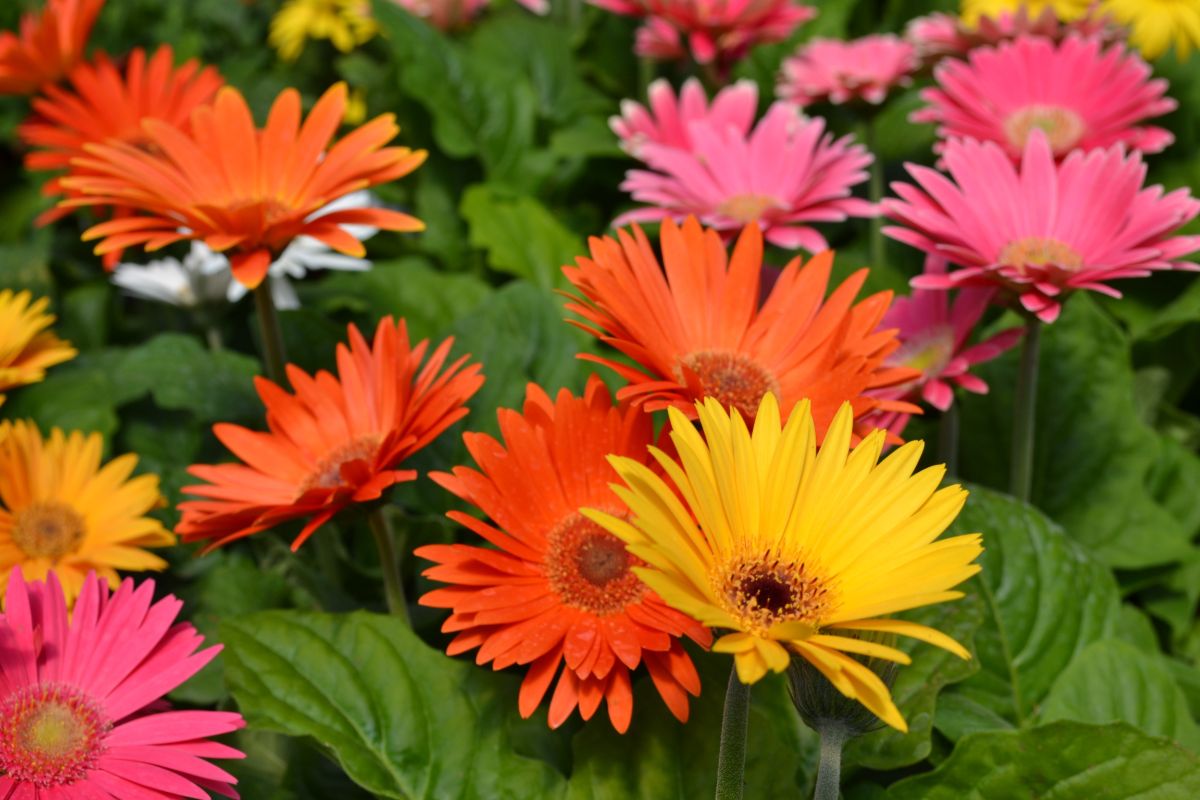
These cheerful flowers come in a variety of cultivars. Here are just a few varieties that might do well in your garden:
- Pink Whisper: If you are looking for attractive blooms in pink, consider this cultivar.
- Orange Capraia: For an orange Gerbera daisy to add to your collection, you may want to plant this stunning variety.
- Red Suri: This type of Gerbera has reddish orangey petals and a dark center. While it is not a true red, its autumnal hue will captivate you.
- Another option for a red Gerbera daisy is the “Red Rafinee” cultivar. Indeed, this type of Gerbera is arguably a deeper red than the “Red Suri” type above.
- Green Kermit: Here is a cultivar that features fluffy petals with a creamy light greenish color.
- Yellow Lampione: Do you want bright yellow Gerbera daisies? These beautiful flowers will make you think of the bright, cheery hue of sunshine.
- Pink and White Linosa: One of the most striking cultivars of Gerbera daisies is this one, which features light pink petals that fade to white at the tips.
- White Amando: As you might guess, this cultivar of Gerberas features white petals. It has a fluffy look.
- Flori Line Maxi Lilac: Despite the name, it is more proper to describe these flowers as having a pink hue rather than a lilac one.
- Flori Line Maxi Yellow: This cultivar features yellow petals and dark centers, vaguely resembling a sunflower.
- Garvinea Classic Jasmina: This cultivar has an appearance that is similar to the “Pink and White Linosa.”
- Garvinea Lydia: The yellow centers of this type of Gerbera contrast vividly with the deep red petals.
- Garvinea Sweet Honey: These Gerberas are orange through and through, from petals to middles.
- Garvinea Sweet Heart: This cultivar looks similar to the “Sweet Honey” one above, but trade out the orange hue for a pink one.
- Garvinea Sweet Surprise: If you have been searching for purple flowers, this is the cultivar for you. The centers are yellow.
- Karoo: This variety features pink petals fading to white around dark centers.
- Volcanoes: You will love how dramatic the fiery orange petals of this cultivar are.
- Revolution Bicolor Rose: This plant looks a lot like the Karoo, but instead of the white being at the tips, it is in the centers of the petals.
Consider buying Gerbera flowers online, where you will find the largest selection of cultivars.
When Do Gerbera Daisies Bloom?
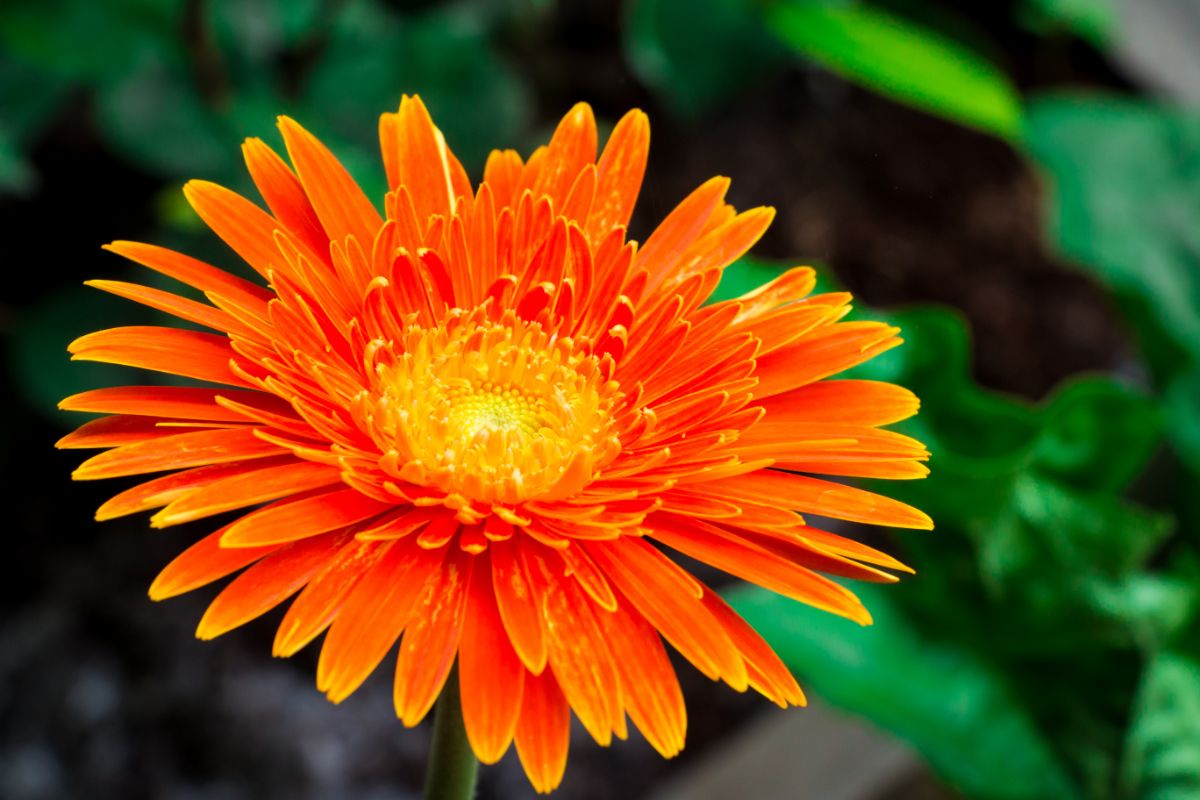
When you plant Gerbera daisies in your yard, you will be able to enjoy their spectacular displays of color as early as spring, continuing through summer all the way into fall.
How Long Do Gerbera Daisies Bloom?
When to Plant Gerbera Daisies
Wait until the last frost is passed in the springtime, and then plant your Gerbera daisies.
Ideal Growing Conditions for Gerbera Daisies
Before we can talk about how to plant Gerbera daisies, we need to go over the conditions they need to grow. That way, you know where to put them!
How Much Sun Do Gerbera Daisies Need?

Gerbera daisies need a sunny spot. At a minimum, they should get six hours of daily direct sun. Bright morning sun is better than direct afternoon sun. So, if you are going with a location in your garden that receives partial shade, the shade should fall over your plants in the afternoon.
What happens if Gerbera daisies do not receive enough sunlight? They tend to languish and produce fewer blooms.
What Type of Soil is Right for Gerbera Daisies?
The right type of soil for these types of daisies is average or rich. The soil should be moist but well-draining.
It is very important that you do not plant Gerbera daisies in soil that is wet or water-logged. If you do, you can expect fungal diseases.
The ideal pH for soil for Gerbera daisies is anywhere from 6.1 to 7.5.
How Much Water Do Gerbera Daisies Need?
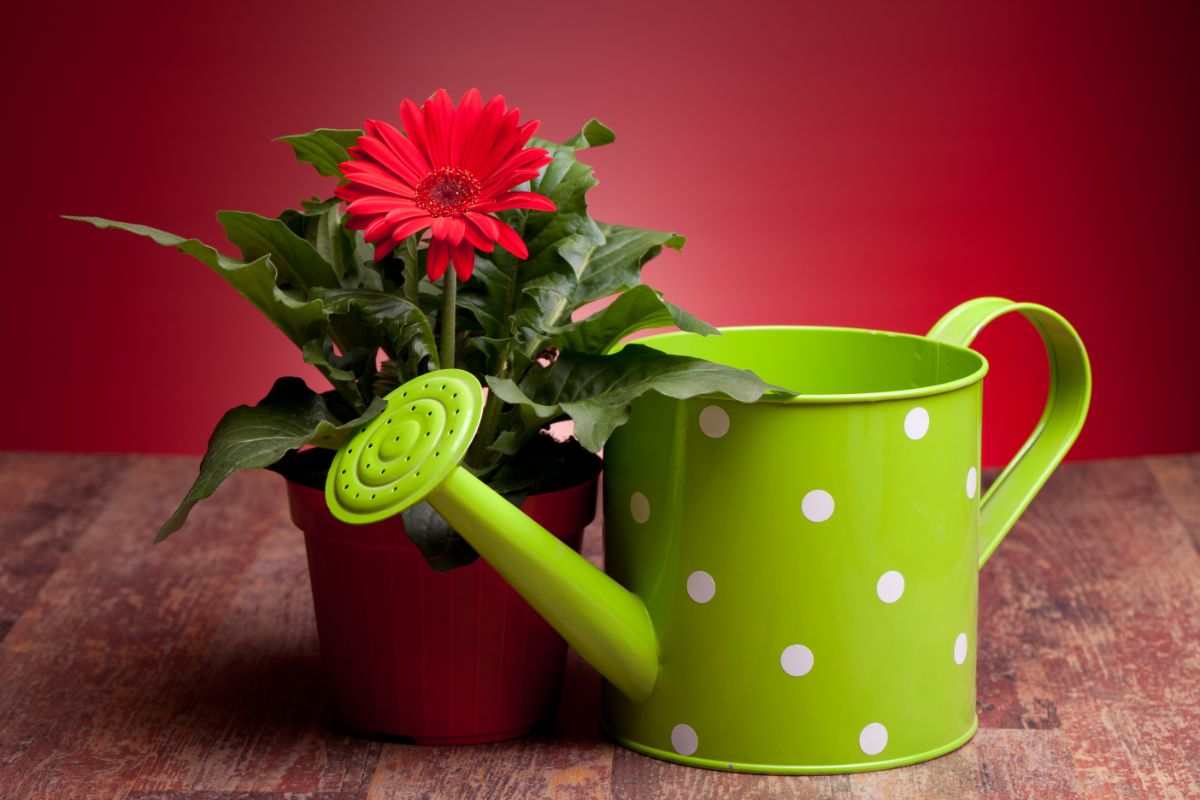
An inch of water weekly is ideal for Gerbera daisies over spring and summer. Sometimes, precipitation alone can take care of this requirement. Other times, you may need to step in and water your daisies.
Your Gerbera daisies will continue to require watering the rest of the year, but not as much. Check to see whether the top inch of the soil is moist or dry. If it is still moist, then wait. If it is dry, then water. Again, that is just for fall and winter.
Miracle Gro offers some specific instructions on watering Gerbera daisies. The company says, “To help avoid over-watering, wait until the top inch of soil is dry before watering. Aim the stream of water toward the base of the plant, not the leaves—a practice that can help keep disease at bay. If you start to see little gnats flying around the plant, it means the soil is probably too moist, so you’ll want to cut back on watering.”
How to Plant Gerbera Daisies
Now that you know what conditions you need for healthy Gerbera daisies, you are ready to plant them!
You can start Gerbera daisies from seeds or cuttings, or you can pick up a nursery plant.
In the directions for container and ground planting below, we will assume that you are starting with a nursery plant.
After that, we will talk about seeds and cuttings.
Container Planting
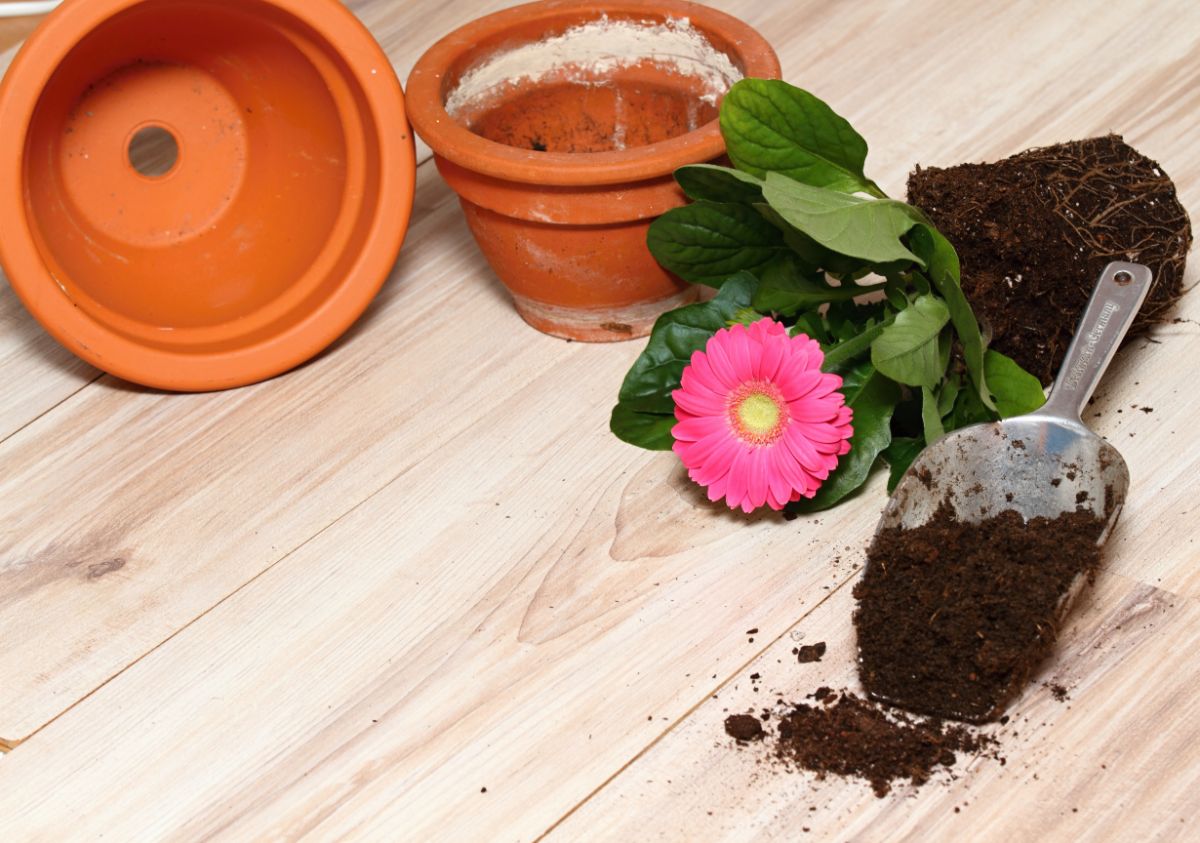
- Choose a container for your potted Gerbera daisies.
How large a container do you need for Gerbera daisies? Miracle Gro recommends, “Choose a pot that’s no more than ⅓ larger than the root ball of your new plant.” Wider pots may allow you to pack more daisies into a single container.
Your container needs to drain well, so add holes to the bottom if it did not come with them.
- Fill the container.
Choose perlite or sand-based potting mix for your Gerbera daisies, and pour it into the pot. You only need to take up about half the volume of your pot with the potting mix. You will need the rest for your plant.
- Take care when un-potting your starter plants.
Before you transplant your starter plants into their permanent containers, you will be removing them from the containers they came in.
It is important to take care with this step. The University of Florida explains, “Gerberas are available as potted plants or as pass-along divisions from other gardeners. If you are planting Gerberas that have been growing in a pot, water the plants well before removing them from their container. When you remove your plant from the pot, take a good look at the roots; if they appear "pot bound," carefully loosen the root ball. Gerbera daisies can also be propagated from seed.”
- Plant your Gerbera daisy.
Now it is time to make a hole for your plant and put it in your container. Backfill the potting mix, being sure not to cover the crown.
- Water your potted Gerbera daisy deeply.
Be sure the water drains.
- Choose a location for your Gerbera daisy.
Now you just need to find a place where your Gerbera daisy can receive sufficient sun. Water your daisy regularly as it is establishing.
Also, as with any other potted plants, Gerbera daisies in containers may dry out more rapidly than those in the ground. Watch out for that during a drought.
Ground Planting
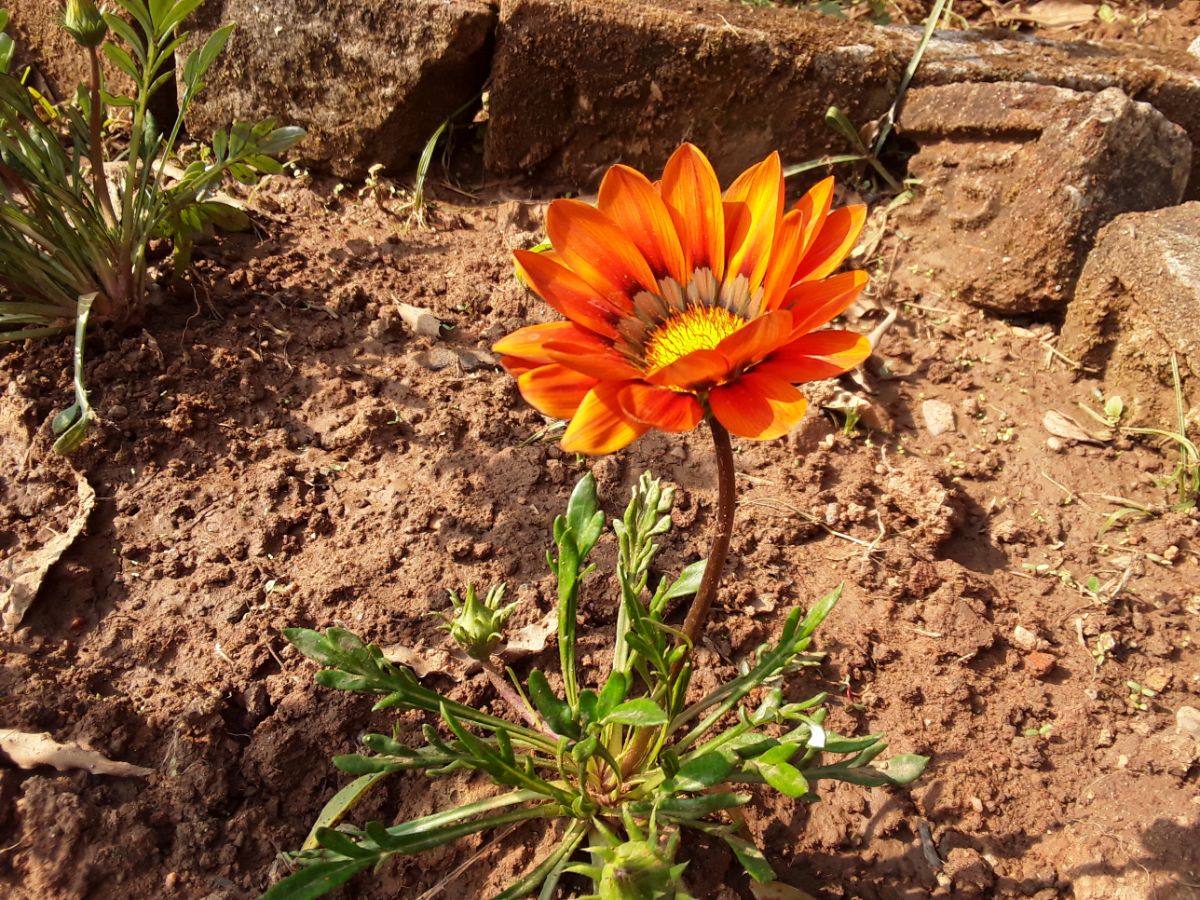
- Find the right spot in your garden.
If you read our section on ideal conditions for growing Gerbera daisies, you already should have a good idea of what to look for when choosing a spot to plant them.
The ideal location will be somewhere where your plants get plenty of direct morning sun, and maybe some afternoon shade. The soil should be well-draining.
- Amend your soil.
If your soil is acidic, you should amend it to bring its pH within a more acceptable range. Dolomitic limestone can do the trick.
You also are going to want to add some organic matter to your soil. A bit of compost can improve texture and drainage while increasing the available nutrition.
What if you just cannot make your heavy soil palatable to these plants? That is a situation where you would be better off planting your Gerbera daisies in containers instead of in your garden beds.
- Plant your daisies.
Dig holes for your daisies. How far apart should you plant Gerbera daisies? These plants need around 12-18 inches of separation. This will ensure that they receive enough airflow to prevent problems with rot. Backfill the soil.
- Water your daisies.
Now, deeply water your daisies. Continue to water them more than you normally would while they are established in your flower beds.
Starting Gerbera Daisies from Seeds
Along with nursery plants, Gerbera daisy seeds offer you another way to start these plants.
The right time for starting Gerbera daisy seeds is 8-10 weeks before you expect the final frost of the year.
- Pour sterile potting mix into starter trays with drainage holes.
- Use a spray bottle to moisten the potting mix. Allow any excess water to drain.
- Carefully plant your seeds. You need to take care to orient the seeds correctly as you do this. One end of each seed is pointed; this end should be directed down into the potting mix. The seeds should mostly be embedded under the potting mix, but the top ends should be visible. If no sun can reach your seeds, they will not grow, so this is crucial.
- Wait for your seeds to sprout. You can expect germination in up to three weeks. During the process, keep plastic wrap or a clear cover on top. That way, light can get through, but at the same time, moisture has a harder time escaping.
You will need to check on your seeds on a regular basis to make sure they are not too dry. If the soil is drying out, spritz it with the spray bottle.
Ideal conditions for germination are lots of direct light and temperatures right around 70 degrees Fahrenheit.
- Move your seedlings into bigger containers.
Eventually, each of your Gerbera daisies will have a pair of true leaves. When that happens, they will need more space than the starter trays offer, so relocate them to bigger containers.
- Harden your daisies and move them outdoors permanently.
After the last frost is behind you, you can begin the hardening process. This just means moving your plants outside, then back in, then back out, and so on repeatedly until they get used to the outdoor weather.
Then, either plant your daisies in your garden beds or keep them outside in containers.
Starting Gerbera Daisies from Cuttings
Along with starting Gerbera daisies from seeds, you can also start them from cuttings. Here are the steps:
- Choose a suitable container and fill it.
Get a small pot with drainage holes that you can use for your cuttings. Fill it with potting soil.
- Take your cuttings.
The best time to take Gerbera daisy cuttings is during summer. Stems should be cut at the base right near the soil. Make sure the length of each of your cuttings is about 6 inches.
- Prepare the cuttings.
Your cuttings should not have flowers, so pinch off the blossoms. You can leave the leaves at the top of the cutting in place, but you should remove the ones that are closer to the base.
- Dip the cut end of each of your cuttings in rooting hormone.
- Make small holes in the potting mix, and then insert the cut ends of the stems into it.
- Using a spray bottle, moisten the soil.
- Wait for your cuttings to develop roots.
Now comes the part where you wait for the magic to happen. Place the container in the indirect sun, and cover it with a clear lid or plastic wrap.
It is very important to keep the soil moist throughout the process. While the cover will help, you will still need to keep adding more moisture on a daily basis. Continue using the spray bottle.
- When the time is right, get rid of the lid.
Eventually, you may notice a bit of fresh growth on your cuttings. That means that the roots are forming. You can now take off the lid or plastic wrap.
Your cuttings are still developing their roots, so you will need to continue to let them grow indoors a little bit longer. Even though the plastic wrap is no longer necessary, moisture is, so be diligent with watering.
- Harden your new daisies.
Once the weather outside is warm enough, you can harden your Gerbera daisies.
- Transplant your daisies.
Once you have hardened your Gerbera daisies, you can plant them in your garden beds or larger containers.
How to Care for Gerbera Daisies
Having discussed planting Gerbera daisies, we can now talk about fertilizing, mulching, pruning, and other care instructions.
How to Fertilize Gerbera Daisies
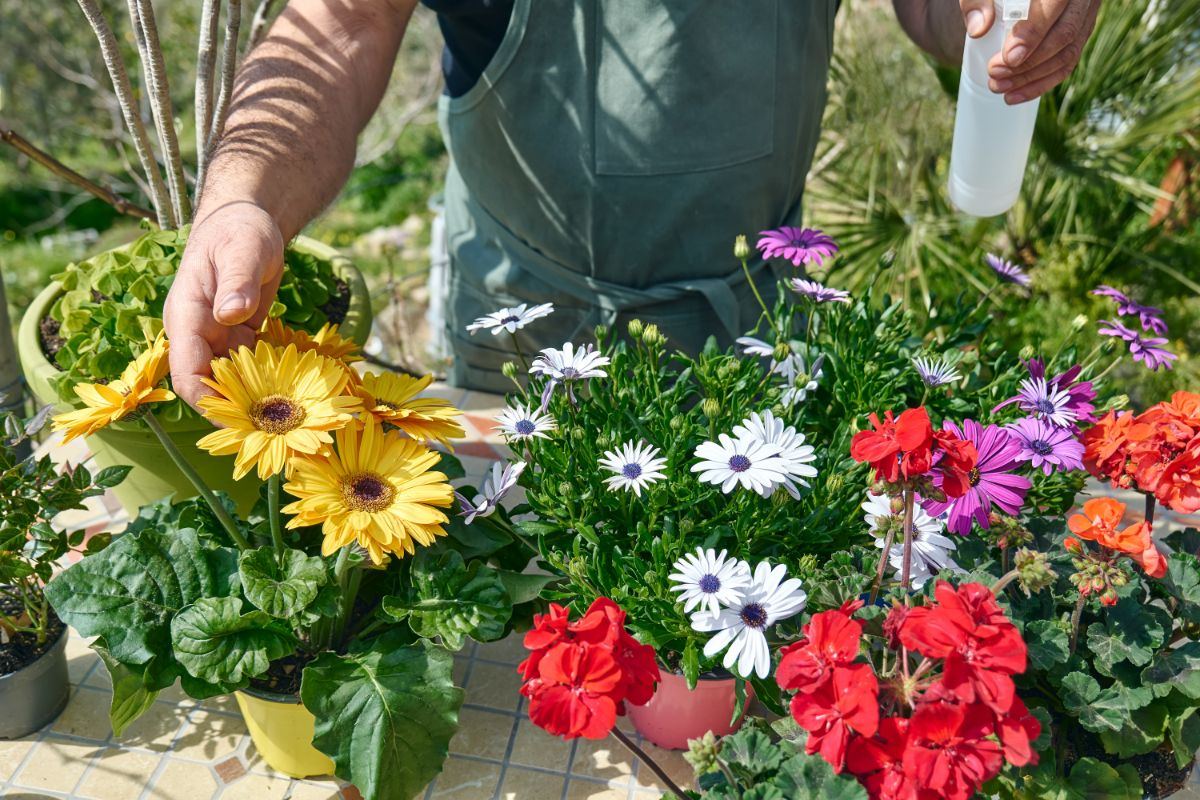
Gerbera daisies can benefit from some extra nutrients in the form of regular fertilizing. The Clemson Cooperative Extension says, “Fertilizing gerbera daisies is important to produce the best-looking plants. Apply a controlled-release fertilizer two to three times during the growing season or use a liquid fertilizer every two weeks. Gerberas can suffer from iron and manganese deficiencies, especially in potting soil; therefore, use a granular fertilizer or foliar fertilizer spray that contains these micronutrients.”
How to Mulch Gerbera Daisies
You can prevent weeds from encroaching on your Gerbera daisies by surrounding them with a couple of inches of mulch. A couple of materials that can work well include pine bark and pine straw. Mulching your daisies also can help you to lock moisture into the soil.
How to Stake Gerbera Daisies
Generally speaking, you do not need to stake Gerbera daisies. If they droop, there are other explanations and solutions. See the FAQ.
How to Prune Gerbera Daisies
You can prune your Gerbera daisies throughout the season with deadheading, and then finish up by cutting them back for the winter.
How to Deadhead Gerbera Daisies
You absolutely should deadhead your Gerbera daisies when you see spent blossoms. While you simply would pinch off the blooms with some types of flowers, with these plants, you should instead trim the stems by the crowns.
By deadheading your Gerbera daisies, you are encouraging them to keep producing more flowers. That is how you can enjoy them for the longest span of the year.
When to Cut Back Gerbera Daisies
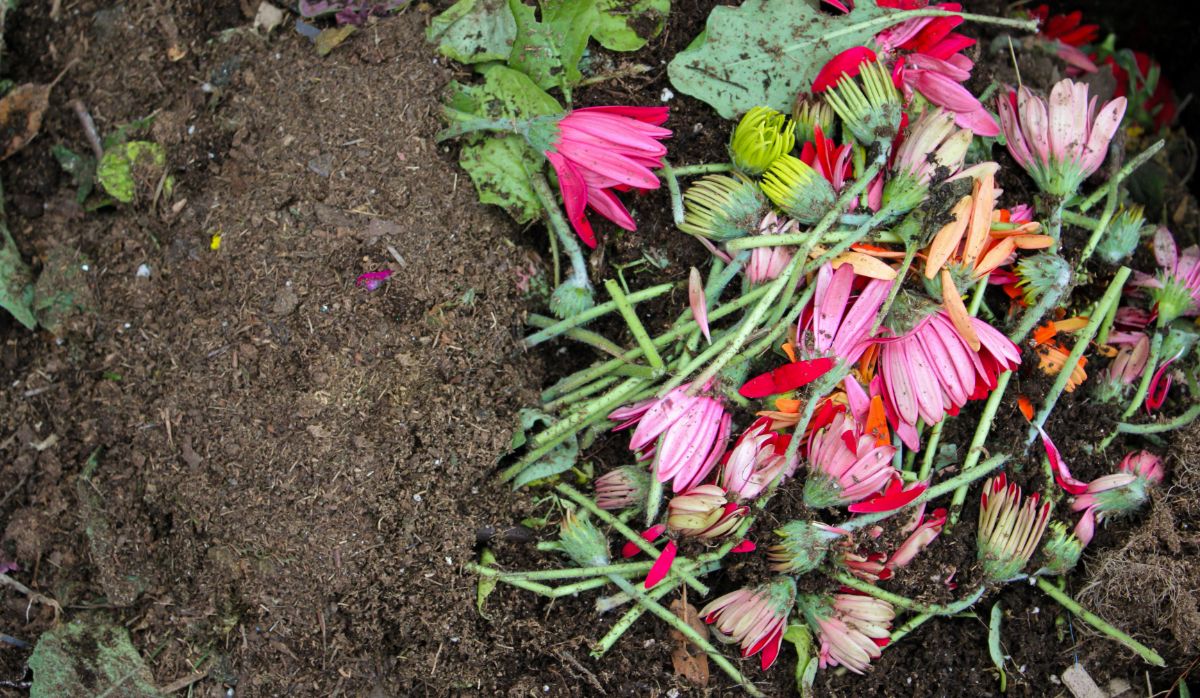
Regardless of your climate zone (see the next section), it is a good idea to trim your Gerbera daisies after the season is over. Leave just an inch above the soil. Do this before receiving your first frost.
How to Overwinter Gerbera Daisies
Speaking of the first frost, if you are below climate zone 7, your Gerbera daisies may not survive the winter outdoors. But you can keep them alive by overwintering them indoors.
- Put the Gerbera daisy in a container.
If your Gerbera daisy is in a container already, you can skip this step. But if it is in your garden bed, you will have to dig it up and transplant it into a pot.
Note: In the future, you may want to keep your Gerbera daisy plants permanently in containers. If you want, you can bury the containers in your garden beds, and then dig them up later. You do not want to keep subjecting your plants to unnecessary transplant stress.
- Bring the plant indoors and take care of it.
Choose a spot for your daisy where it will receive plenty of sun in your home. Water it if the top inch of the soil is dry. You can continue to provide monthly fertilizer as well.
- Harden your plant in spring.
When the weather warms up, and the danger of frost has passed, harden your plant.
- Relocate the daisy back outdoors for the bloom season.
If you want it in your garden bed, bury the pot. Otherwise, just set it up on your deck, patio, or wherever else you might want it.
Are Gerbera Daisies Vulnerable to Diseases or Pests?
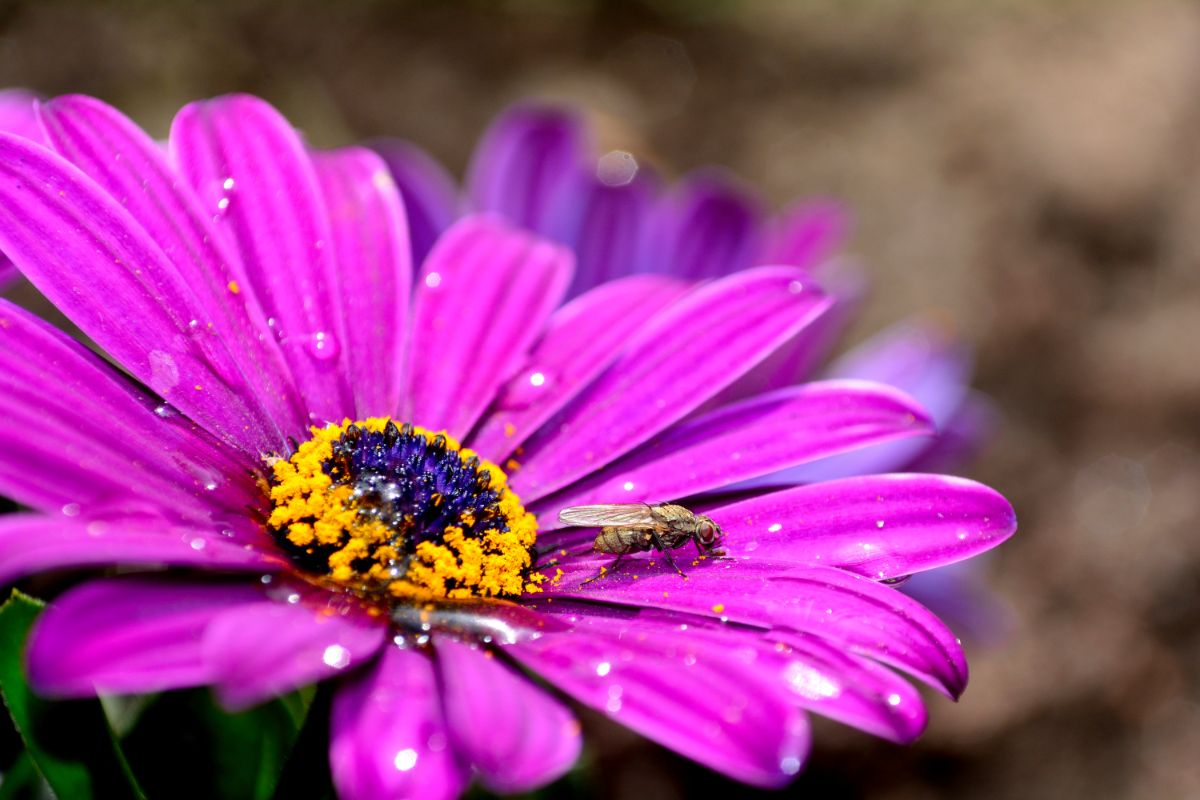
Like other garden perennials, Gerbera daisies sometimes are susceptible to pests and diseases. Be on the lookout for thrips, whiteflies, aphids, and spider mites.
While you need to take action against these pests to protect your plants, you need to take care that you do not hurt your plants instead. Clemson Cooperative Extension writes, “Do not use neem oil or insecticidal soap sprays when the temperature is above 90F or in full sun, as this may damage the plants. Spraying in the late evening is better than spraying in the morning to protect pollinating insects.”
Snails and slugs sometimes eat Gerbera daisies too, so you will want to remove these if you spot them near your daisies.
Alas, mammals can cause problems for Gerbera daisies too. In fact, deer and rabbits are quite fond of them, so you will need to be alert for animals in your yard.
Having talked about pests that can infest your Gerbera daisies, let’s now talk about diseases.
South Dakota State University Extension writes, “Powdery Mildew is probably the most common disease that affects gerberas. It appears as whitish spots that quickly spread until the entire leaf surface is covered. The white powdery growth is a fungus that over time becomes gray to tan/brown felt like patches. Leaves may become stunted, curled, chlorotic and eventually wither and dry up.”
One thing you should be extra alert for with Gerbera daisies is the possibility of crown rot. As explained here, the crown should be level with the soil or above it, not below it. Moreover, “Over time, these plants will sink into the soil, and after a year or two the crown can become entirely covered. To prevent crown rot—caused by excess moisture—dig, lift, and replant your Gerberas periodically.”
Other diseases that may affect Gerbera daisies include gray mold, tomato spotted wilt virus, verticillium wilt, and other forms of rot.
Spacing Gerbera daisies sufficiently from each other and other plants can help you prevent disease.
How to Divide and Transplant Gerbera Daisies
As with many other perennials, if you want to increase your number of Gerbera daisy plants and improve their appearance, you can occasionally divide them.
The ideal time to do this is generally in spring or summer, but if your climate is warm enough, you might also be able to do so at other times of the year. Note that multiple crowns are required before you can divide a Gerbera daisy plant. A single crown plant should be left alone.
Here are the steps:
- Carefully dig down into the ground around your Gerbera daisy.
Make a circle around the daisy, steering clear of the roots. W
- Pry the Gerbera daisy up out of the ground by lifting from underneath it.
Again, be careful with the roots.
- Divide the Gerbera daisy.
It is pretty easy to figure out how to divide a Gerbera daisy because of the crowns. Just cut between them and pull them apart so that instead of a single plant with multiple crowns, you now have multiple plants with single crowns.
- Clean up the plants a bit.
Instead of going straight to the next step, take some time to tidy up your Gerbera daisies. If you find any dead plant matter, snip it off and discard it.
It also is recommended that you reduce the number of mature leaves on the bottom of each plant by about 50%.
- Dig holes for your new plants.
Amend the soil as is appropriate.
- Transplant the Gerbera daisies.
It is now just a matter of putting the Gerbera daisies in your flower beds or containers and backfilling the soil.
- Water your Gerbera daisies.
After transplanting is complete, deeply water your daisies. Also make sure to give them extra water as needed while they establish in their new places in your garden.
Recommended Companion Plants for Gerbera Daisies
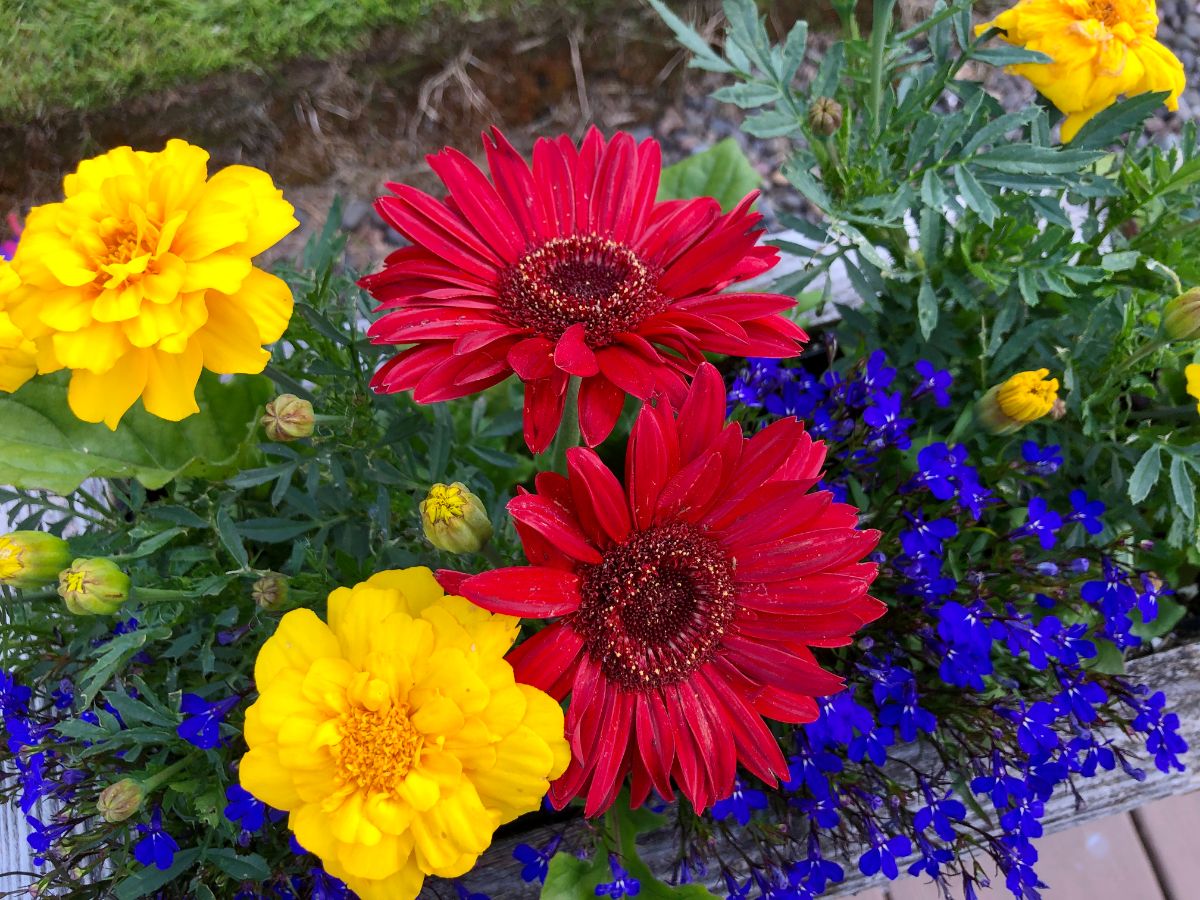
What should you plant next to your Gerbera daisies? Let’s go over a few ideas:
- Rosemary: If you are tired of Gerbera daisies getting eaten by deer, it might help to plant something deer-resistant next to them. Rosemary loves the sun and may do well beside your daisies. While it will not necessarily stop deer in their tracks, it will at least dissuade them a bit.
- Heliotrope: These purple flowers can offer a contrast to the warm colors of Gerbera daisies. They like rich, well-draining soil and plenty of sunshine.
- Geraniums: These beautiful plants flower in spring, and are deer-resistant, making them a nice choice for accompanying Gerbera daisies.
- Coneflowers: Blossoming between July and September, these flowers are beautiful mixed together with Gerbera daisies. As with the daisies, they enjoy sunlight with a little shade in the afternoons.
Those are just a few examples of companion plants to go with your daisies. You can find many more with some research!
Frequently Asked Questions About Growing Gerbera Daisies
Not sure if container planting or garden bed planting is right for you? Well, aside from aesthetic considerations, there are a couple of easy ways to make this decision.
What type of soil do you have? If it is heavy clay, then you might do better planting your daisies in containers. Alternately, you could go with raised garden beds, filling them with more appropriate soil.
Another consideration is your climate. If you are in a climate zone where Gerbera daisies are hardy year-round, your garden beds should be fine. But if you are not, planting them in containers is a convenient move. That way, keeping them safe during the winter is as simple as carrying the pots indoors.
There are a few reasons why Gerbera daisies may droop. The solution depends on the problem:
Root-bound daisies. If your daisies are much larger than they were when you first put them in your containers, there is a chance that they have simply outgrown them. If they are root-bound, drooping may result. So, transplant them into larger pots or even your garden beds. As they establish, they should start perking up.
Watering issues. How much are you watering your plants? Check to see if the soil is dry. Maybe you are under-watering them, and that is causing them to droop. Alternately, does the soil feel wet? Is it not draining properly? This may also explain the drooping. In that case, back off on the watering schedule a bit, and/or replace the soil with something less heavy.
pH balance. If the pH of the soil is too high or too low, you might see drooping. If so, it is just a matter of amending the soil to correct the pH.
Malnutrition. Sometimes Gerbera daisies that are crowded by other plants will not get enough nutrition. Move them to where they have more space, and/or fertilize them.
Transplant shock. If the drooping occurred immediately after you moved the Gerbera daisy plant out into your garden, it could be that the abrupt change in conditions has given the plant too much of a shock. If at all possible in the future, try to harden plants before putting them outdoors permanently.
Insects, slugs, snails, rabbits, and deer are all possible culprits. See our section on pests and diseases for more.
No. Gerbera daisies are non-toxic to cats, dogs, and horses. So, if your pet runs around in your yard, you do not need to worry about them getting into the daisies.
Where to Buy Gerbera Daisies
Gerbera daisies can brighten up your flower beds or your deck or patio, rewarding you with gorgeous blooms year after year. To order Gerbera daisies for your garden now, click below.

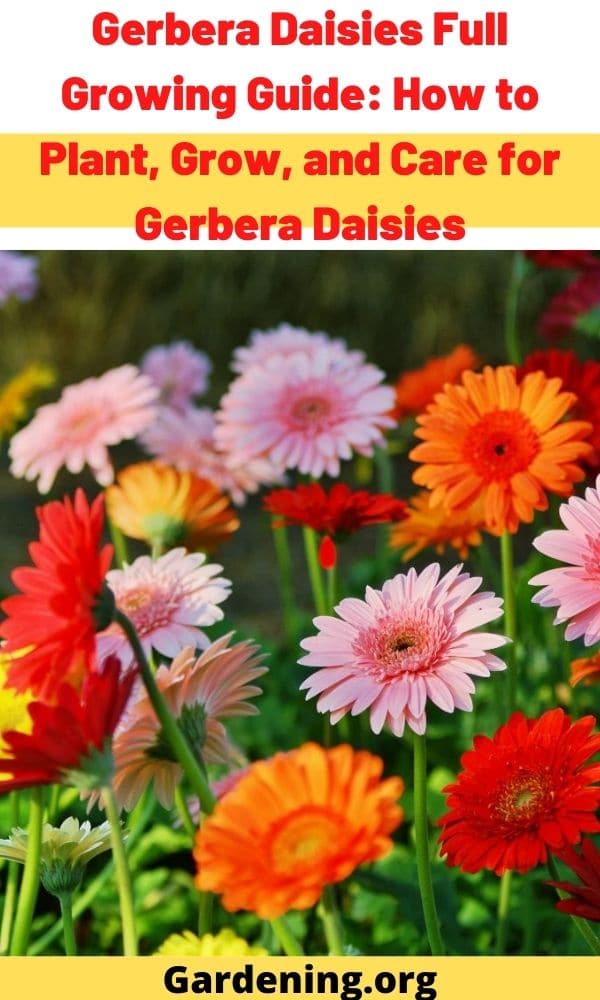

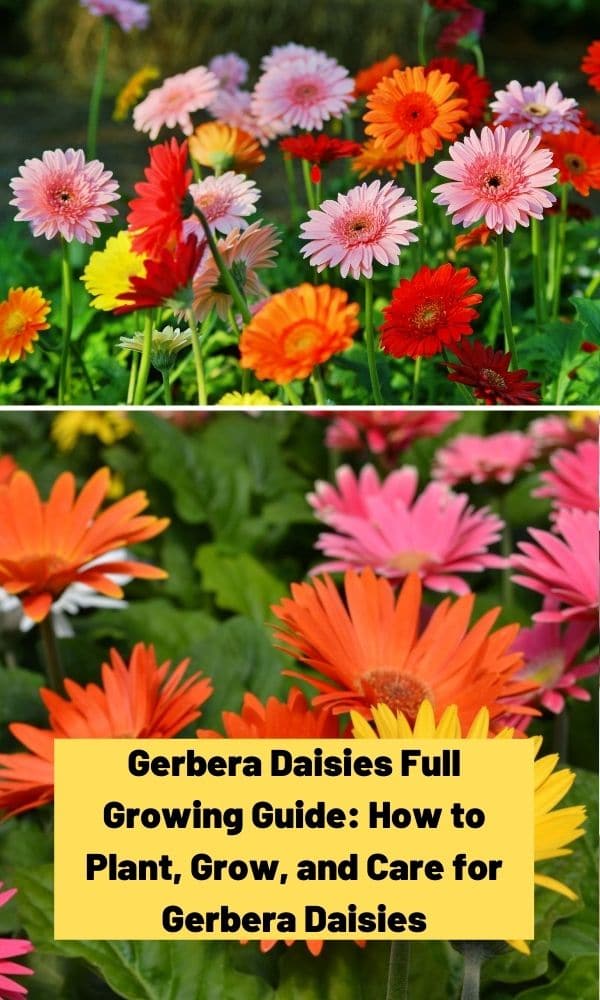

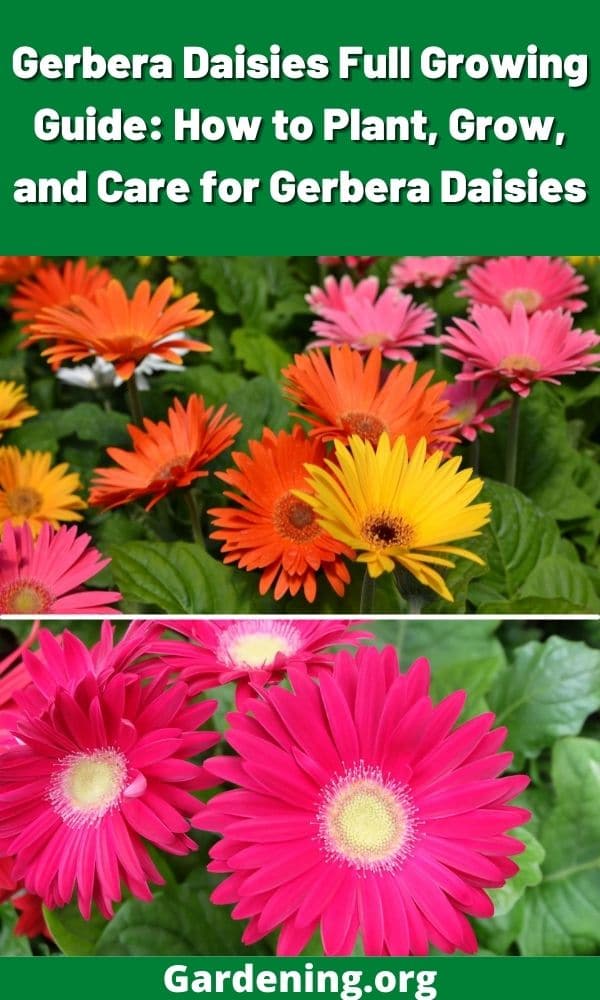





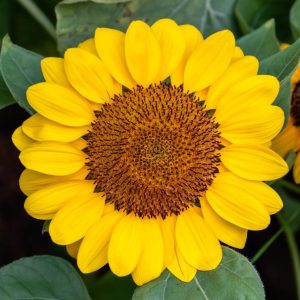
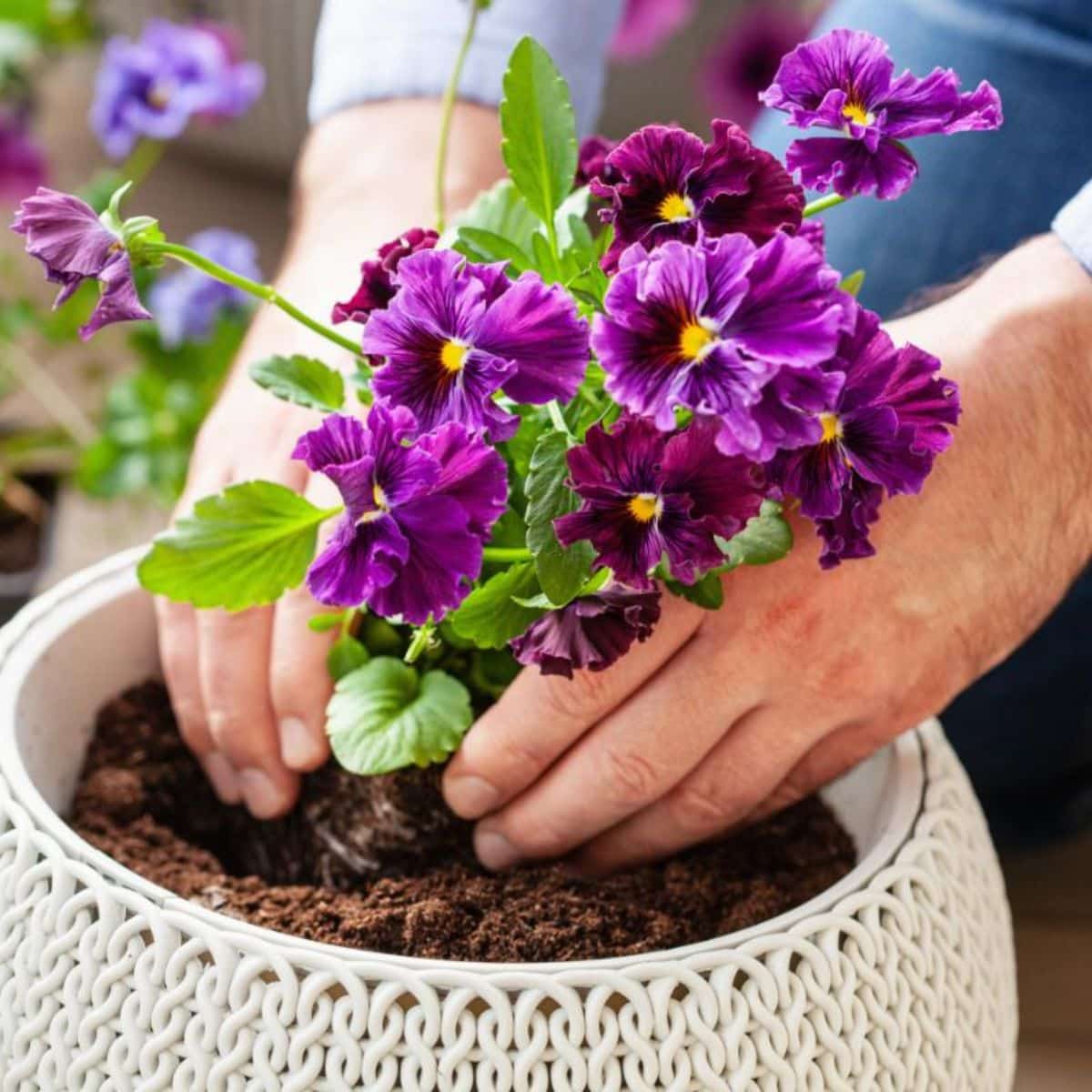
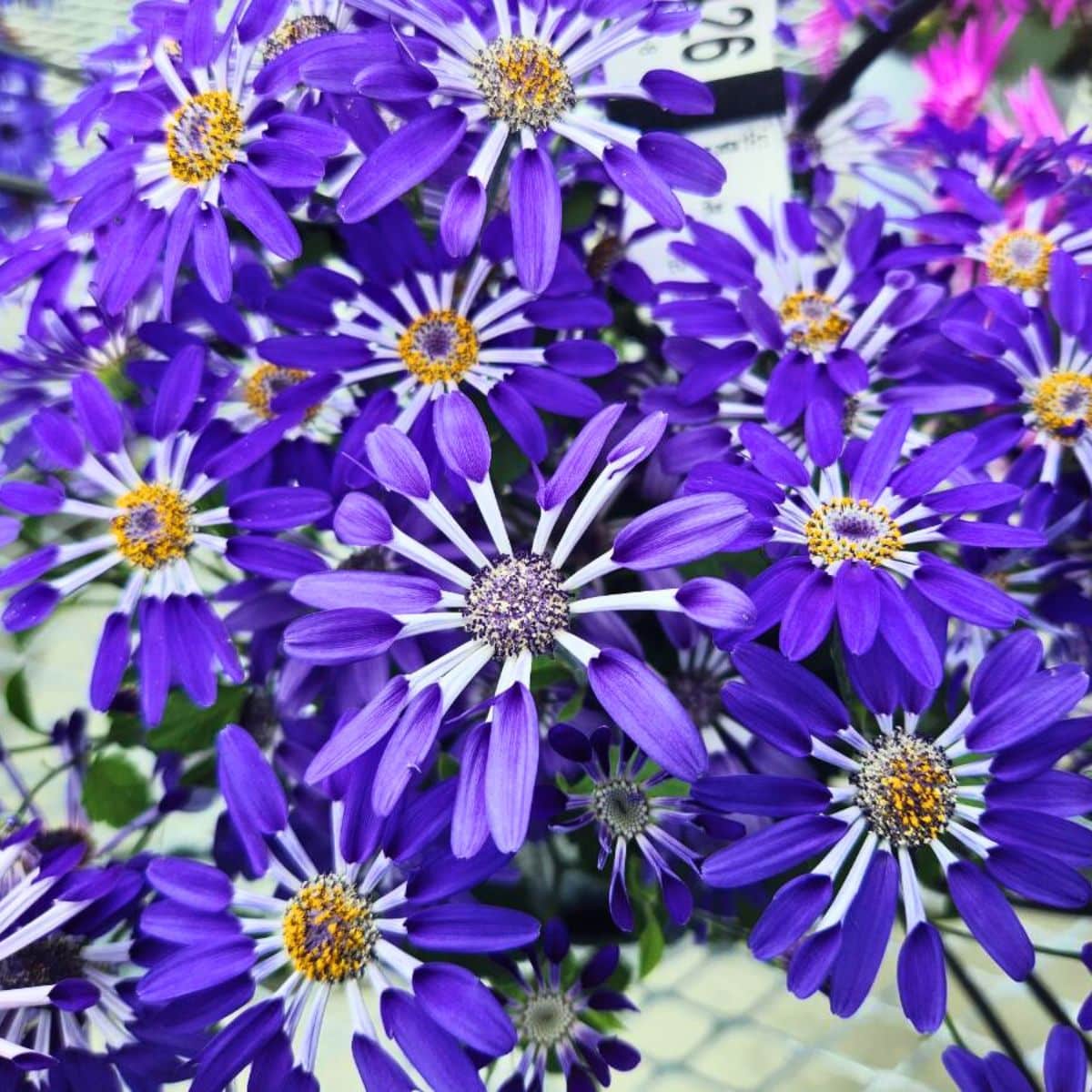
Michael Farrell
I liked the article it explains Gerbia Daisy's in detail on each part of growing them. Plus it shows the different colors available and where to get them.
Thanks for the very informative article!
Mike Farrell
Mary Ward
Thanks Mike--you're welcome!